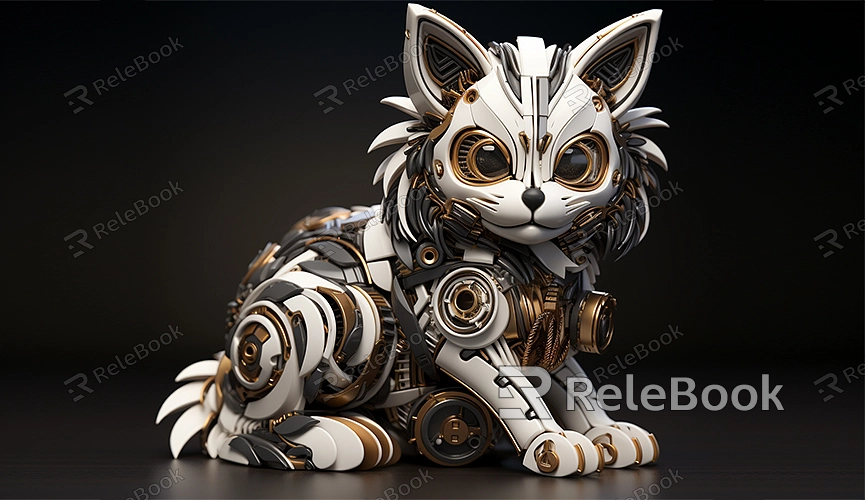Modeling Details and Considerations for a Cat in Maya
When modeling a cat in Maya, it's essential to consider its specific anatomy and features to create a realistic effect. It's advisable to maintain observations of cats and periodically compare your 3D model with reference images to ensure accuracy. Strive to keep the topology structure clear and optimized for subsequent animation and rendering work. Additionally, here are some details and considerations for your modeling process:

1. Reference Images: Gather clear, high-resolution reference images of the cat, including front, side, and back views. This helps accurately capture the cat's shape and proportions.
2. Basic Shapes: Start modeling the cat in Maya with simple basic shapes like cubes or spheres to roughly simulate the body and head. Gradually add more geometry to construct different body parts.
3. Anatomy: Understanding the cat's basic anatomy is crucial. Knowledge of its skeleton, muscles, and bone structure will help you better shape its appearance.
4. Symmetry: Most of a cat's body is symmetrical, allowing you to use Maya's symmetry tools to reduce workload and ensure model symmetry.
5. Gradual Detail Addition: Add details to the model gradually, starting from the overall shape and then gradually incorporating smaller details such as ears, eyes, and the nose.
6. Eyes and Ears: Cat eyes and ears are distinctive features. Ensure sufficient geometry is allocated for these areas and maintain their unique shapes during modeling.
7. Tail: The cat's tail is also a significant feature. Consider the shape and length of the tail, ensuring it naturally connects to the body.
8. Adjust Topology Structure: Ensure the model's topology structure (vertex, edge, and face layout) is reasonable for smooth animation and deformation in subsequent steps.
9. Fur Simulation: Cats usually have fur, and you can use Maya's fur simulation tools, such as XGen, to simulate cat fur, enhancing the model's realism.
10. UV Unwrapping: Before adding details, ensure correct UV unwrapping. This makes applying 3D textures and textures easier, and you can download high-quality 3D textures from Relebook.
11. Expressions and Poses: If you plan to animate the cat, ensure the model's topology structure supports natural poses and expressions.
12. Detail Sculpting: For subtle details, consider using Maya's sculpting tools, such as the Sculpt Geometry tool, to adjust the surface shape.
13. Rendering and Lighting: In the final stages, set appropriate lighting and rendering settings to make the cat model appear more realistic. High-quality HDRI lighting from Relebook can better simulate real lighting effects.

